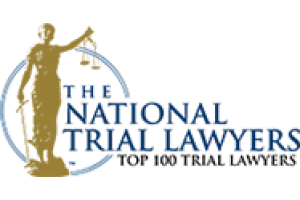Rotator Cuff Injuries
VIRGINIA TORN ROTATOR CUFF INJURY LAWYER WITH LOCATIONS IN
ALEXANDRIA , WOODBRIDGE, MANASSAS, AND FREDERICKBURG
Insight Into Rotator Cuff Injuries
Virginia rotator cuff injury lawyer Gerald Schwartz has been described as a “master” at explaining complex personal injuries. Join him as he explains how the rotator cuff works and what happens when it is injured in a motor vehicle accident.
Understanding Rotator Cuff Injuries
Robert tore his rotator cuff in a Fairfax, Virginia car accident on Route 123. He has trouble raising his arm.
The term “rotator cuff” refers to four tendons that surround the shoulder joint, like the cuff of a shirt sleeve. They help rotate your shoulder in many directions. (A tendon is a strong band holding bones to muscles.) The rotator cuff tendons are attached to the rotator cuff muscles which are attached to the bones of the shoulder. The rotator cuff muscles are a group of four deep muscles in the shoulder that attach to the scapula (shoulder blade) and to the upper arm (the humerus). The rotator cuff muscles help raise the arm from the side and help rotate your shoulder. Muscles are attached to bone by a tough fibrous tendon. The four rotator cuff tendons attach to four rotator cuff muscles to bones of the shoulder. The rotator cuff tendons – the supraspinatus, infraspinatus, subscapularis, and the teres minor – fuse together and surround the shoulder joint like the cuff of a shirt sleeve. When the rotator muscles contract they pull the rotator cuff tendons allowing the shoulder to rotate in many directions, hence the name “rotator cuff.”
Accidental Rotator Cuff Injuries
Rotator cuff injuries are often caused by auto, truck and motorcycle accidents.
They include:
- Rotator cuff tendonitis (inflammation)
- Rotator cuff tear (partial or complete)
Diagnosis of Rotator Cuff Tears
A person with a torn rotator cuff injury will feel pain and weakness when raising or rotating the arm. An MRI will often show a tear of one of the four rotator cuff tendons.
Treatment for Rotator Cuff Tears
Treatment for a rotator cuff tear begins with conservative treatment consisting of anti-inflammatory medications or a cortisone injection to help decrease inflammation. In addition, physical therapy is often prescribed to build-up flexibility and strength of the shoulder. If shoulder impairment persists, small incision, arthroscopic surgery or more complicated, open surgical repair of the rotator cuff is often needed.
Arthroscopic Surgery of the Shoulder
Arthroscopic surgery allows an orthopedic surgeon to look inside your shoulder joint. The surgeon first makes a small surgical incision into the shoulder joint and inserts an arthroscope. The arthroscope is a pencil-sized tube that contains a video camera on the end, which is attached to a television screen. The arthroscope allows the surgeon to view the inside of your shoulder on the television screen. Another surgical incision is made into the shoulder joint for the insertion of small surgical instruments that allow the surgeon to repair the personal injury inside your shoulder joint, such as a torn rotator cuff.
Virginia torn rotator cuff injury lawyer Gerald Schwartz and his Alexandria personal injury law firm have represented hundreds of clients who suffered pain and lost full movement of their arm from a rotator cuff tear injury.
Shoulder Impingement Syndrome
Many clients of Fredericksburg rotator cuff injury lawyer Gerald Schwartz develop impingement syndrome of the shoulder after an accident. Impingement syndrome starts with an injury to the rotator cuff from the trauma. Let’s learn how this happens.
The top most rotator cuff tendon – the supraspinatus – passes under the acromion bone at the top of the shoulder. If the rotator cuff tendon becomes swollen or inflamed from an auto accident injury, it becomes enlarged. As a result, there is less space for the enlarged rotator cuff tendon to pass under the sharp pointed bone of the acromion. The rotator cuff tendon can be pinched by the acromion bone and by the humerus. This pinching of the rotator cuff tendon is called “impingement syndrome.” With continued impingement, the rotator cuff tendon can become torn and break away from its attachment to the upper arm.
Refuting the Defense of Pre-existing Osteoarthritis of the Shoulder in a Fairfax, Virginia Rotator Cuff Injury Case
As Sally suffered a torn rotator cuff in a Fairfax, Virginia car accident on I-495. In personal injury claims and lawsuits involving shoulder impingement syndrome, insurance adjusters and defense attorneys will often blame the client’s problems on osteoarthritis of the acromion that pre-existed the car accident. Many people, including Sally, have sharp pointed bone spurs on the front of the acromion bone, which after an accident impinges on the rotator cuff tendon. This defense is easily refuted by showing that the injured person never had any impingement symptoms before. The accident, like in Sally’s case, caused the rotator cuff tendon to become inflamed and enlarged, leaving no room for it to pass under the sharp spur of the acromion. The result is “impingement syndrome” — post-traumatic impingement of the rotator cuff tendon by the sharp acromion spur. If it were not for the auto accident, Sally, and clients like her, would never have had symptoms.
FREE CONSULTATION: ROTATOR CUFF INJURY
Alexandria accident attorney Gerald Schwartz has 30 years experience as a Virginia rotator cuff injury lawyer representing clients from Fairfax to Fredericksburg. He understands your injury, how it happened, and how it affects you. To discuss your injury and learn your legal options, call Gerald Schwartz directly at 1-800-423-0055 – for a free consultation.







